
Creswell is a former mining village located in the Bolsover district of Derbyshire, England. At the 2011 Census population details were included in the civil parish of Elmton-with-Creswell. Today it is best known for Creswell Crags and its model village. In September 1950 Creswell Colliery was the scene of one of the worst post-nationalisation mining disasters. Elmton Common is an area of allotments for the township of Creswell.

Creswell railway station serves the village Creswell in Derbyshire, England. The station is on the Robin Hood Line between Nottingham and Worksop. It is also the nearest station to the larger village of Clowne.

Shirebrook railway station serves the town of Shirebrook in Derbyshire, England. The station is on the Robin Hood Line, 21½ miles (35 km) north of Nottingham towards Worksop.
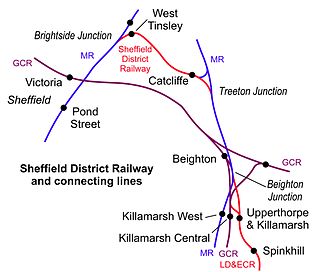
Catcliffe railway station is a former railway station in the Catcliffe area of Rotherham, South Yorkshire, England.
The Lancashire, Derbyshire and East Coast Railway (LD&ECR) was built to connect coalfields in Derbyshire and Nottinghamshire with Warrington and a new port on the Lincolnshire coast. It was a huge undertaking, and the company was unable to raise the money to build its line. With the financial help of the Great Eastern Railway it managed to open between Chesterfield and Lincoln with a branch towards Sheffield from 1896. Despite efforts to promote tourist travel, the passenger business was never buoyant, but collieries were connected to the line, at first and in succeeding years. The Great Eastern Railway, and other main line companies, transported coal to the southern counties, and the company's engines took coal to Immingham in great quantities. The company had a fleet of tank engines.

Bolsover South is a former railway station in Carr Vale, Bolsover, Derbyshire, England.
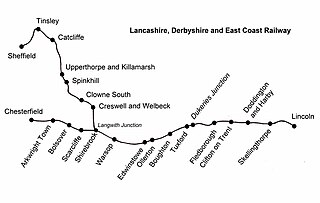
Scarcliffe railway station is a former railway station in Scarcliffe, Derbyshire, England.

Shirebrook North railway station was a station on the Lancashire, Derbyshire and East Coast Railway running from Chesterfield to Lincoln in the East Midlands Region.

Warsop railway station is a former railway station in Market Warsop, Nottinghamshire, England.
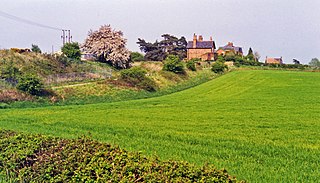
Edwinstowe railway station is a former railway station in Edwinstowe, Nottinghamshire, England.

Ollerton railway station is a former railway station in Ollerton, Nottinghamshire, England.
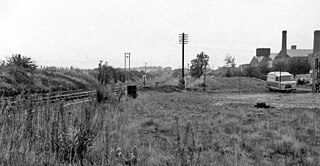
Boughton railway station served the village of Boughton in Nottinghamshire, England from 1897 to 1955 when it was closed. It has since been razed to the ground.

Tuxford Central railway station is a former railway station in Tuxford, Nottinghamshire, England.

Doddington and Harby railway station is a former railway station on the Nottinghamshire border with Lincolnshire, England.

Skellingthorpe railway station is one of two former railway station in Skellingthorpe, Lincolnshire, England, on the border with Nottinghamshire.
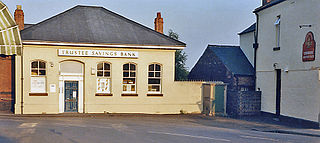
Clowne South railway station is a former railway station in Clowne, Derbyshire, England.
Upperthorpe and Killamarsh was a railway station in Killamarsh, North East Derbyshire, England which served the village from its opening in 1899 until its closure in 1930. It was situated on the LD&ECR's line into Sheffield between Spinkhill and Woodhouse Mill stations.
Boythorpe Viaduct was a railway viaduct in Chesterfield, England.
Markland Grips Viaduct is a former railway viaduct south east of Clowne, Derbyshire, England.
The Beighton Branch was a railway branch line built by the Lancashire, Derbyshire and East Coast Railway (LD&ECR) in north eastern Derbyshire, England.












